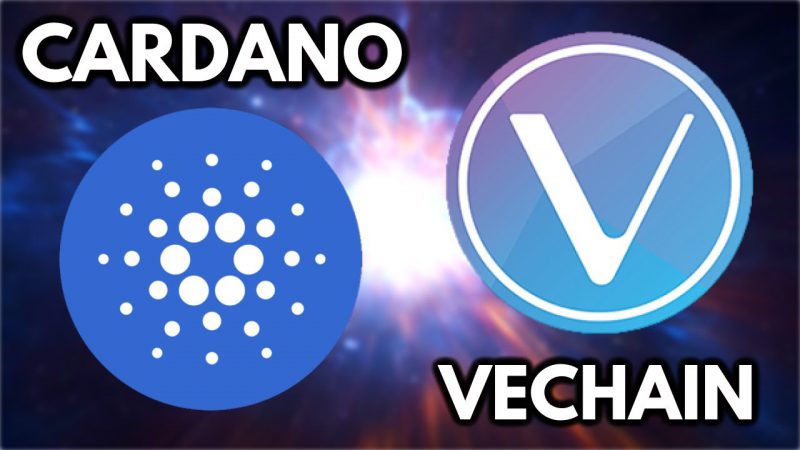The cryptocurrency market is incredibly unpredictable, and popular cryptocurrencies today can quickly devolve into shitcoins tomorrow. However, some crypto coins and tokens manage to stay on top despite the volatility. As a result, crypto investors are continually on the lookout for booming cryptocurrencies, notwithstanding where such crypto assets wind up after getting to the moon.
VeChain and Cardano are two such fascinating projects that have exploded in popularity in recent months.
VeChain(VET) Vs Cardano(ADA) : Coin Information
VeChain used to be on the Ethereum network before launching its own network in 2018. It was developed in 2015 by Sonny Liu, with the VeChain 0.1 version launching in the following year, seeing the growth of the network across the internet.
A partnership between PoW and VeChain as an incubation program in 2017 saw the launching of the VeChain Foundation. It could have become a blockchain for all transactions, but VeChain adopted some special features in its development, like making VET a utility asset that could leverage the adoption rate and usability index of the VET token and the VeChain platform at large.
The platform rebranded from VEN to VET in 2018 and moreover launched the mobile wallet and mainnet. All these made it fully functional.
Cardano, on the other hand, was created in 2015 by Ethereum co-founder Charles Hoskinson. Its native asset ADA aims not only to offer a platform for sending and receiving a native cryptocurrency, but it can also facilitate smart contracts and the development of distributed applications as well.
As for the blockchain, Cardano offers a unique two-layer architecture. One for handling general transactions, and the other for dealing with smart contracts. In addition, Cardano was the world’s first peer-reviewed digital currency.
VeChain(VET) Vs Cardano(ADA): Tokenomics
Let’s look at the pricing changes to gather a solid idea of how the two will fare in the long-run.
We can observe that Cardano has performed far better than Vechain. This does not, however, imply that it will outperform Vechain in the future.
Looking at the numbers, we can yet again see that Cardano is more popular at number six as compared to VeChain sitting at twenty-third.
Similarities Between VeChain (VET) and Cardano (ADA)
- Both are native coins: VET and ADA, respectively, are the native coins of VeChain and Cardano.
- Existence in Marketplaces: You can buy, sell, trade, and stake both of these coins on cryptocurrency exchanges all over the world.
- Stake Friendly: You can stake both of these currencies in order to receive a reward for assisting with the security and operation of the blockchain.
- Limited Supply: Both of these tokens have a finite supply, with VET having a maximum supply of 86.7 billion and ADA having a maximum supply of 45 billion.
Differences Between VeChain (VET) and Cardano (ADA)
- Market Cap: Cardano’s market capitalization (the value of a company’s stock on the market) is nearly ten times that of VeChain at the time of writing.
- Token Burning: VeChain consumes 70% of transaction expenses (in VeThor, not in VET), whereas Cardano burns none.
- Smart Contracts: Whereas smart contracts are yet inclusive in Cardano, VeChain currently supports them.
- Consensus Protocol: Cardano uses the Proof of Stake consensus system, whereas VeChain uses the Proof of Authority consensus system.
- Inflation: VET is deflationary, but ADA is inflationary. Inflation is downward price pressure, whereas deflation is upward price pressure. Deflation is handy when it comes to evaluating them as possible investments.
So, Which is Better?
While Vechain dominates its industry, Cardano lies under the shadow of Ethereum. Furthermore, it also has a lot more room to grow, because of its 10x smaller market cap.
However, Cardano is still a force to reckon with and a popular cryptocurrency with numbers backing it up. So, while things might change in the future, Cardano takes the cake at the moment of writing.





